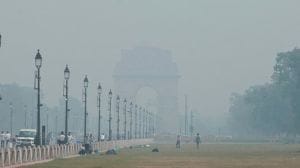Stay updated with the latest - Click here to follow us on Instagram
Across the state,govt plans to develop bus stations a class apart
In a first of its kind project,Uttar Pradesh has decided to soon turn its existing 226 bus stations across the state into ultra modern bus stations through public-private partnership with an estimated investment of about Rs 3,088 crores.
In a first of its kind project,Uttar Pradesh has decided to soon turn its existing 226 bus stations across the state into ultra modern bus stations through public-private partnership with an estimated investment of about Rs 3,088 crores. Sources in the government said the government is planing to take up the transformation of these bus stations at a fast pace,which will cater to thousands of people each day. In order to expedite the process,a pre-bid meeting with interested private players recently took place in Lucknow and it was attended by seven interested bidders,including DSC constructions,Ramky Infrastructure,Flora and Fauna development ltd,SEW Infrastructure,PNC Infratech etc.
These bus stations will be built on the existing properties of Uttar Pradesh State Road Transport Corporation (UPSRTC) and provide computerised services for booking,information about arrival and departure of buses,passenger amenities that will include dormitories,rest room as well as shopping centres,parking lot for private vehicles etc. It would be the responsibility of the developer to design,built,operate and manage these bus stations and provide services at the rates decided between the them and the government.
As per the terms and conditions agreed between the bidders and the government,the private players will have to share the profits with the UPSRTC and thus,the bidder,which quotes higher profit sharing to UPSRTC would be selected as the developer. Moreover,developer will be allowed to use only 30 per cent of the area for construction and permission for only vertical expansion will be granted to them.
There are seventeen regions of UPSRTC in the state,and thus depending on the size and area of these bus stations,we have divided them into 11 groups for bidding process. The interested parties may opt for one or more of these groups,if they qualify the minimum financial requirement. We have clubbed some of the regions in such a manner that no region is left out since expected profit earning would be low, said a government official. In order to maintain a balance,regions like Agra and Jhansi have been clubbed together for bidding. Similarly Bareli and Azamgarh,Meerut and Etawah,Ghaziabad and Hardoi too have been clubbed together for the bidding process.
Interestingly,apart from turning them into modern bus stations,the government has also decided to develop these bus stations under different categories,namely A,B and C,and the minimum facilities and passenger amenities at these stations will depend on the category to which it would belong. For example,an A class bus station will have air condition canteen or food plaza with a capacity of around 50-80 people,whereas B class station will have similar facility for 20-50 people. For C class bus station,the same facility will be for 15-20 people.
Similarly,an A class station would have additional facilities like ATM,phone booths,book stalls,general merchant stores etc. Even passengers dormitory would be a minimum requirement for A class bus terminal,and televisions will be installed at various locations in A and B class bus stations.
The parking charges for the buses would also depend on the category of the bus station. For example,proposed parking rates are Rs 50,Rs 30 and Rs 20 respectively so far along with additional Rs 50 for night halts.
Sources said the number of the stations under each category are yet to be finalised. Final consultation with the bidders will be held in the next pre-bid meeting scheduled for February 10. Moreover,out of these 226 bus stations,53 stations would be bus terminus cum workshops,and the bidders would charge for providing services of these workshop as well.
Some of the interested bidders demanded that maximum ground coverage should be increased from 30 per cent of the total area to about 40-50 per cent. This was,however,rejected by the government.







